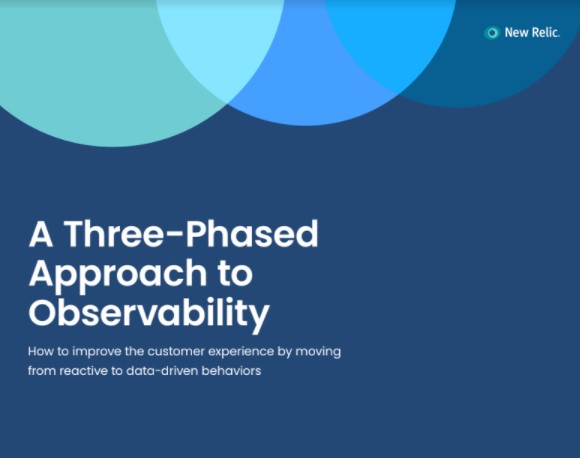DocuShare flaws could lead to data leakage unless you install these patches
CISA warns companies to apply patches now


Xerox has moved to fix two flaws in its DocuShare enterprise document-management platform that could enable hackers to steal data from users. The remedy comes after Cybersecurity and Infrastructure Security Agency (CISA) issued a security bulletin.
CISA urged users and administrators to apply a patch that fixes two bugs in recently released versions (6.6.1, 7.0, and 7.5) of Xerox’s DocuShare. The vulnerability is rated “Important.”
According to Xerox’s advisory, the bugs, tracked as CVE-2020-27177, expose users to a server-side request forgery (SSRF) attack and an unauthenticated external XML entity injection attack (XXE). Xerox didn’t share any details on the bugs or explain how an attacker could take advantage of the flaws. The document did, however, provide links to updated versions on Linux, Windows, and Solaris.
A server-side request forgery (SSRF) attack is where an attacker abuses functionality on the server to read or update internal resources.
“The attacker can supply or modify a URL which the code running on the server will read or submit data to, and by carefully selecting the URLs, the attacker may be able to read server configuration such as AWS metadata, connect to internal services like HTTP enabled databases or perform post requests towards internal services which are not intended to be exposed,” according to OWASP Foundation.
An XML External Entity (XXE) is a type of attack against an application that parses XML input. This attack may lead to confidential data disclosure, denial of service, server-side request forgery, port scanning from the machine’s perspective where the parser is located, and other system impacts.
RELATED RESOURCE

A three-phased approach to observability
How to improve the customer experience by moving from reactive to data-driven behaviours
Jamie Akhtar, CEO and co-founder of CyberSmart, told ITPro that organizations can often protect themselves from the vast majority of cyber attacks by merely adhering to a basic set of cyber hygiene standards. Chief among these is staying aware of the vulnerabilities that exist, then swiftly updating and patching devices.
Get the ITPro daily newsletter
Sign up today and you will receive a free copy of our Future Focus 2025 report - the leading guidance on AI, cybersecurity and other IT challenges as per 700+ senior executives
“Xerox has already made available patches to the security flaws in their exposed systems. It is now down to organizations to implement these. Those who delay this will no doubt attract the attention of cybercriminals, who see these businesses as an easy target,” Akhtar said.
“Unfortunately, software providers may not always have a ‘hotfix’ available for all software. In this case, the Solaris version of DocuShare 7.5 is not yet available. In these situations, organizations should implement temporary mitigation procedures until a permanent solution is offered.”
Rene Millman is a freelance writer and broadcaster who covers cybersecurity, AI, IoT, and the cloud. He also works as a contributing analyst at GigaOm and has previously worked as an analyst for Gartner covering the infrastructure market. He has made numerous television appearances to give his views and expertise on technology trends and companies that affect and shape our lives. You can follow Rene Millman on Twitter.
-
 Bigger salaries, more burnout: Is the CISO role in crisis?
Bigger salaries, more burnout: Is the CISO role in crisis?In-depth CISOs are more stressed than ever before – but why is this and what can be done?
By Kate O'Flaherty Published
-
 Cheap cyber crime kits can be bought on the dark web for less than $25
Cheap cyber crime kits can be bought on the dark web for less than $25News Research from NordVPN shows phishing kits are now widely available on the dark web and via messaging apps like Telegram, and are often selling for less than $25.
By Emma Woollacott Published
-
 Hackers are targeting Ivanti VPN users again – here’s what you need to know
Hackers are targeting Ivanti VPN users again – here’s what you need to knowNews Ivanti has re-patched a security flaw in its Connect Secure VPN appliances that's been exploited by a China-linked espionage group since at least the middle of March.
By Emma Woollacott Published
-
 Broadcom issues urgent alert over three VMware zero-days
Broadcom issues urgent alert over three VMware zero-daysNews The firm says it has information to suggest all three are being exploited in the wild
By Solomon Klappholz Published
-
 Nakivo backup flaw still present on some systems months after firms’ ‘silent patch’, researchers claim
Nakivo backup flaw still present on some systems months after firms’ ‘silent patch’, researchers claimNews Over 200 vulnerable Nakivo backup instances have been identified months after the firm silently patched a security flaw.
By Solomon Klappholz Published
-
 Everything you need to know about the Microsoft Power Pages vulnerability
Everything you need to know about the Microsoft Power Pages vulnerabilityNews A severe Microsoft Power Pages vulnerability has been fixed after cyber criminals were found to have been exploiting unpatched systems in the wild.
By Solomon Klappholz Published
-
 Vulnerability management complexity is leaving enterprises at serious risk
Vulnerability management complexity is leaving enterprises at serious riskNews Fragmented data and siloed processes mean remediation is taking too long
By Emma Woollacott Published
-
 A critical Ivanti flaw is being exploited in the wild – here’s what you need to know
A critical Ivanti flaw is being exploited in the wild – here’s what you need to knowNews Cyber criminals are actively exploiting a critical RCE flaw affecting Ivanti Connect Secure appliances
By Solomon Klappholz Published
-
 Researchers claim an AMD security flaw could let hackers access encrypted data
Researchers claim an AMD security flaw could let hackers access encrypted dataNews Using only a $10 test rig, researchers were able to pull off the badRAM attack
By Solomon Klappholz Published
-
 A journey to cyber resilience
A journey to cyber resiliencewhitepaper DORA: Ushering in a new era of cyber security
By ITPro Published